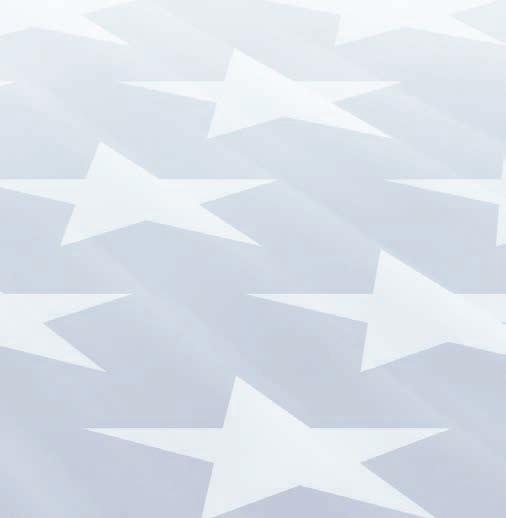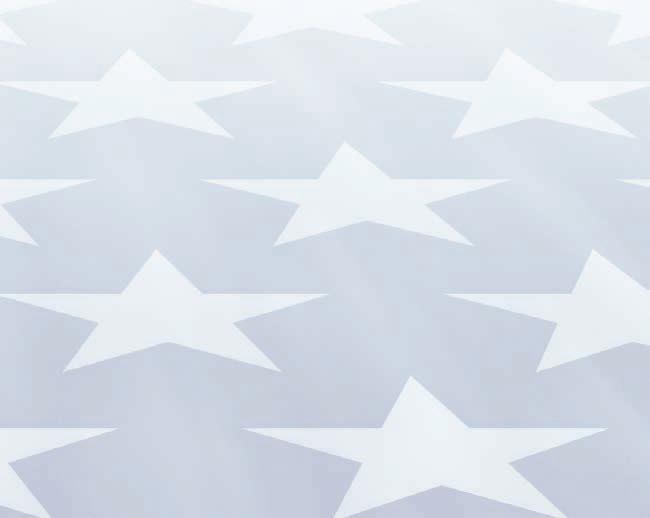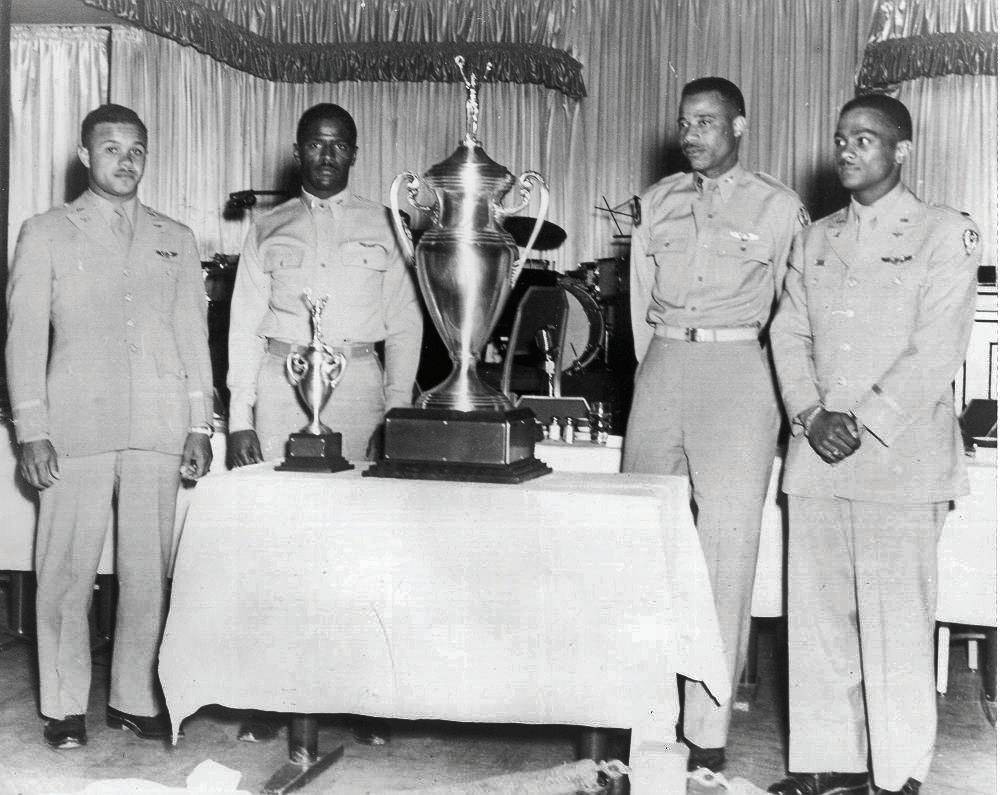
3 minute read
TOP GUN
don’t think Minnie was on the scene yet.”
So, what should we call you?
Harvey earned his wings at Tuskegee Army Air Field on Oct. 16, 1944, near the end of the war. A graduate of Class 44-4, he was commissioned as a second lieutenant and began his career as a ghter pilot.
While many Tuskegee Airmen were already ying in Europe, protecting heavy bomber aircraft on their way to strategic targets, Harvey did not get that opportunity.
“ at’s because Hitler knew I was coming and he gave up the following month,” he joked. “I was supposed to ship in April 1945. And I had my bags packed, ready to catch the train, and I got a message the war was over and they expected the wind-up of the whole European theater.” les — which included their o cial photos — were forwarded to the gaining military unit.
On July 26, 1948, President Harry S. Truman signed Executive Order 9981, creating the President’s Committee on Equality of Treatment and Opportunity in the Armed Services and banning segregation in the Armed Forces.
Harvey says the order was a step in the right direction, but it also meant his unit would be disbanded and its personnel integrated into other units that would “have” them.
“So, you see, the wing commander had our picture,” Harvey said. “So, Eddie and I report to Misawa, Japan, and before we got there, he had all the pilots report to the base theater and he told them, ‘We have these two Negro pilots coming in and they will be assigned to one of the squadrons.’ e pilots said, ‘No way are we going to y with them. No way.’”
Harvey said he and Drummond were told about the meeting by the pilots themselves.
Regardless of the sentiment, Harvey and Drummond were there to stay and were assigned to a unit ying the Lockheed F-80 Shooting Star.
As they wrapped up their initial meeting, Harvey said the man who would be their new wing commander casually asked, “So, what do you want us to call you?”
An uncomfortable moment of silence ensued.
“I said, ‘Well, I’m a rst lieutenant and Eddie Drummond is a second lieutenant… how about lieutenants Harvey and Drummond?’”
First ‘Top Gun’

In January 1949, the newly- nery meet to be held at Las Vegas Air Force Base, Nevada.

It was o cially called the United States Continental Gunnery Meet, which would later evolve into the USAF William Tell Competition. Other derivatives would include Gunsmoke and Red Flag.

Harvey’s unit, the 332nd Fighter Group, selected 1st Lt. Harvey III, 1st Lt. Harry Stewart Jr., and Capt. Alva Temple. ey were all Black pilots, including the alternate pilot, 1st Lt. Halbert Alexander.

“We met with Col. Davis (Col. Benjamin O. Davis, Jr.), prior to leaving for the competition,” Harvey said. “We chit-chatted, and his nal remark was, ‘If you don’t win, don’t come back.’ And with those words of encouragement, o we went.” e competition for “Top Gun” would prove formidable in the conventional piston category, ying the North American P-51 Mustang and the North American F-82 Twin Mustang. ese were some of the best pilots and aircraft maintenance teams in the country ying some of the most advanced aircraft in inventory.
It was May 1949.
“And we’re ying the obsolete P-47 underbolt,” Harvey said “It was big, clumsy — and heavy.”


feet, two missions of aerial gunnery
“Well, we won the meet,” said Harvey. “Our closest competitor was the P-51 out t… they were only 515,000 points behind us.”
They were the winners, but…
Each year, the Air Force Association publishes an almanac citing overall force strength, statistics and such — including all winners of the weapons meet from 1949 through the present day.
“But, each year when that almanac came out, the winner of the 1949 weapons meet was mysteriously listed as ‘unknown,’” Harvey points out. “We didn’t nd out, we, meaning us, the Tuskegee Airmen, didn’t nd out about this magazine until 1995.”
It was only by chance Harvey’s group commander stumbled across an almanac and noticed the winner of the 1949 U.S. Air Force Weapons Meet was “unknown.” e almanac was corrected in April 1995 to show the 332nd Fighter Group as the o cial winners of the 1949 weapons meet. ough the records were xed, one more mystery would remain.
‘That trophy will never be on display’ As winners of the rst Air Force “Top Gun” competition in the












